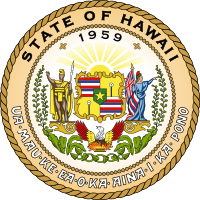Trade Adjustment Assistance (TAA)
If Imports Cost You Your Job . . . Apply for Trade Adjustment Assistance
The Trade Adjustment Assistance (TAA) program is a federal program established under the Trade Act of 1974, as amended. The TAA Program provides aid to workers who lose their jobs or whose hours of work and wages are reduced as a result of competition from imports.
Workers whose employment is adversely affected by increased imports or shifts in production to certain foreign countries may apply for TAA. Secondarily affected workers may also be covered. TAA includes a variety of benefits and reemployment services to help unemployed workers prepare for and obtain suitable employment. Workers may be eligible for training, job search and relocation allowances, income support and other reemployment services.
The TAA Program is administered by the Employment and Training Administration of the US Department of Labor (USDOL). States serve as agents to the USDOL in administering the TAA Program.
How To Apply
A petition for TAA must be submitted to the U.S. Secretary of Labor and to the state trade coordinator in which the layoff occurred. The petition may be filed by a group of three or more workers, a company official, a union, or other duly authorized representative, or a One-Stop operator or One-Stop partner. Copies of the petition form, can be obtained from the USDOL, the local One-Stop Centers, the local unemployment offices or downloaded from the TAA website at https://www.doleta.gov/tradeact/DownloadPetitions.cfm.
Petition forms must be sent to:
- U. S. Department of Labor
Division of Trade Adjustment Assistance
200 Constitution Avenue, NW, Rm C-5311
Washington, DC 20210
Ph: (202) 693-3560
Fax: (202) 693-3584 or (202) 693-3585 - Hawaii Department of Labor and Industrial Relations
Workforce Development Division
Maricar Pilotin-Freitas, Administrator
830 Punchbowl Street, Rm 329 Honolulu, HI 96813
Ph: (808) 586-8812
Fax: (808) 586-8822
To be eligible for TAA benefits, a worker must have been laid off or put on a reduced work schedule (hours of work reduced to 80% or less of the worker’s average weekly hours and wages reduced to 80% or less of the worker’s average weekly wage) on or after the impact date and before the ending date of the certification.
TAA Program Benefits
The TAA Program offers a comprehensive, timely array of retraining and reemployment services tailored to meet the needs of the individual workers. Major activities and services include:
- Training for employment in another job or career. Workers may receive up to 130 weeks of approved training in occupational skills, basic or remedial education, or training in literary or English as a second language.
- Income Support known as trade readjustment allowances (TRA) are weekly cash payment available after exhaustion of regular and extended unemployment benefits. Additional weeks of income support for workers participating in training or remedial education may also be payable.
- Job Search Allowance may be payable to cover expenses incurred in seeking employment outside a worker’s normal commuting area.
- Relocation Allowances provide reimbursement for approved expenses if a worker is successful in obtaining employment outside of the worker’s normal commuting area for the worker to relocate to the new area of employment.
- Other reemployment services such as employment registration, employment counseling, case assessment, job development, self-directed job search services, and other supportive services.
- Alternative TAA (ATAA) or Reemployment TAA (TRAA) is an alternative to the benefits offered under the regular TAA program for older workers. Participation allows older workers to accept reemployment at a lower wage and receive a wage subsidy.
- Health Coverage Tax Credit (HCTC) is a program that can help pay for 72.5% of the worker’s health plan premiums for TRA or ATAA recipients. For details and eligibility requirements, visit the Internal Revenue Service website at www.irs.gov/hctc.
Workers must meet individual eligibility requirements under each benefit in order to receive such benefit. All benefits have different time constraints; therefore, workers must file applications for such benefits on a timely basis. If, however, workers are not satisfied with the determination of their individual application, they have the same appeal rights as are provided under the Hawaii unemployment insurance law. The determination notice which they receive after filing their application will explain their appeal rights and time limits for filing an appeal.
Filing for TRA Benefits (income support)
Once your worker group has been certified by the USDOL, go to the nearest local unemployment office to file an application for a determination of your eligibility for TRA. The TRA claim is administered by the Unemployment Insurance Division. To qualify for TRA, an individual must:
- Be in the class of workers certified as adversely affected by the USDOL.
- Be laid off due to lack of work within the dates on the certification.
- Have worked at least 26 weeks of adversely affected employment at wages of $30 or more per week during the 52 weeks period preceding the layoff.
- Have been entitled to and have exhausted all rights to unemployment insurance benefits.
- Be enrolled in training within 26 weeks of separation or certification date, whichever is later.
Job services are available whether or not the individual qualifies for a TRA claim. Contact the local area One-Stop Centers or the Hawaii Workforce Development Division for assistance.
For more information on the Trade Act Program, visit the USDOL Employment and Training Administration website at https://www.doleta.gov/tradeact.

